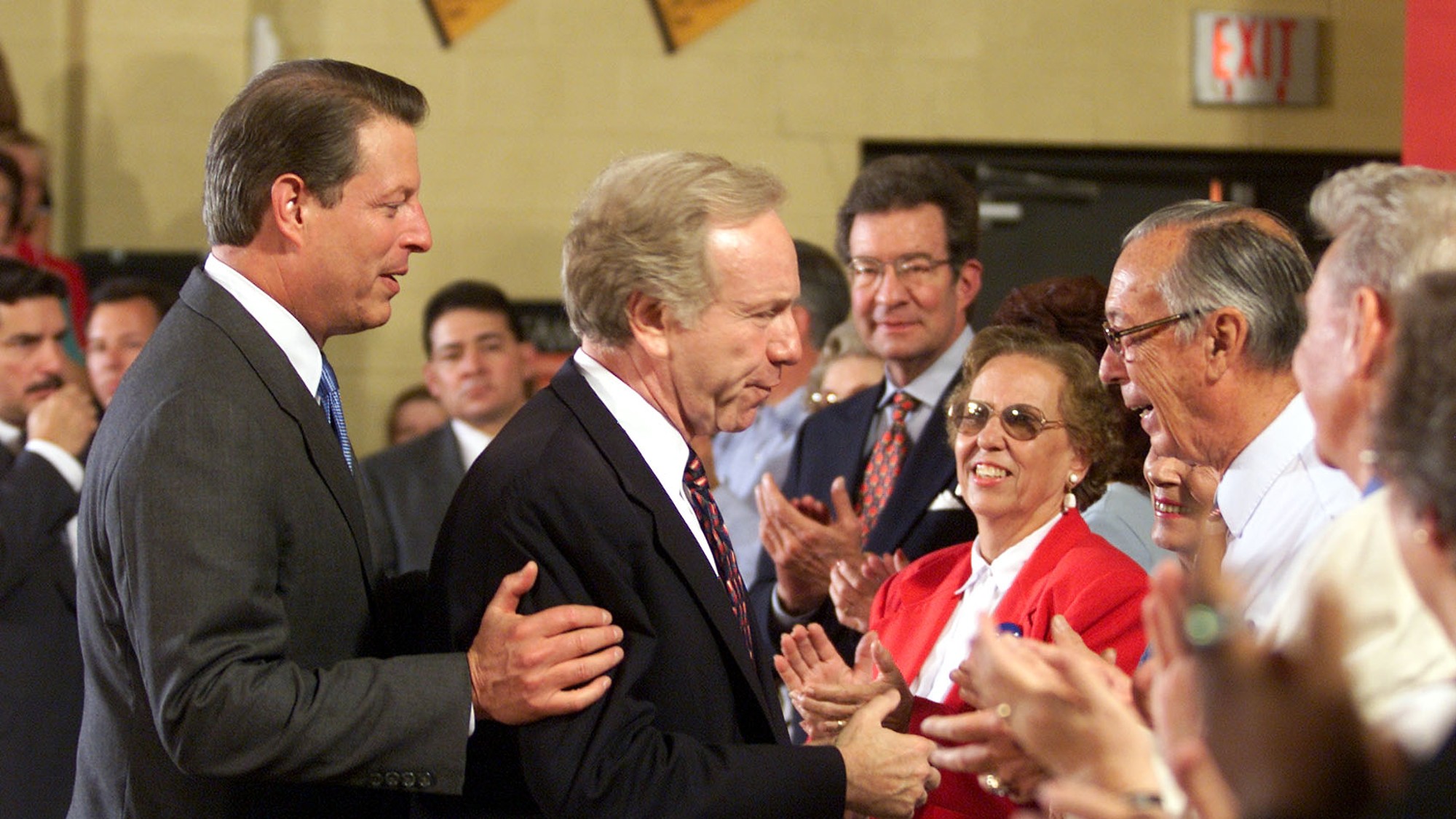The three best and three worst modern vice-presidential nominees
A candidate's choice of running mate can tip the scales in one of two directions


A presidential nominee's choice of a running mate is one of the more high-profile decisions made prior to the general election. Political science research shows that these choices have limited impact, but in the kinds of agonizingly close elections that have characterized American presidential politics for most of this century, running mates can be consequential.
The likely Democratic nominee, Vice President Kamala Harris, is vetting her short list, and GOP nominee Donald Trump selected Sen. J.D. Vance (R-Ohio) earlier this month. Vance has subsequently come under fire for a series of controversial statements over the previous few years, fueling speculation that Trump might dump him from the ticket before it is too late. While it is much too early to say whether Vance will help or harm the Trump campaign, modern history is full of running mates who either helped the ticket across the finish line — or turned out to be a drag on losing campaigns.
The best picks compensate for a nominee's weaknesses
George H.W. Bush (1980): In 1980, former California Gov. Ronald Reagan's brand of social and fiscal conservatism was in the process of taking over the GOP. But the party still included millions of moderates who were uncomfortable with the hawkish Reagan and considered him too extreme. So Reagan took the unusual step of tapping his moderate rival for the nomination, former U.S. Rep. and C.I.A. Director George H.W. Bush, as his running mate. Bush, who would later run successfully for the nomination and win the presidency in 1988, was from the Republican old guard of social liberals. He helped make voters comfortable with Reagan, who only a few years earlier was considered a firebrand who might accidentally start a nuclear war with the Soviets. The soft-spoken Bush ultimately helped Reagan deliver one of the worst defeats of an incumbent in American history when they vanquished Democratic President Jimmy Carter in a landslide.
The Week
Escape your echo chamber. Get the facts behind the news, plus analysis from multiple perspectives.

Sign up for The Week's Free Newsletters
From our morning news briefing to a weekly Good News Newsletter, get the best of The Week delivered directly to your inbox.
From our morning news briefing to a weekly Good News Newsletter, get the best of The Week delivered directly to your inbox.
Mike Pence (2016): Critics derided him as "Mike Dense" and mocked Trump's selection of the pious incumbent governor of Indiana. But the staid and steady Pence helped solidify support from white evangelical voters – perhaps the single most important Republican voting bloc – who were uncomfortable with Trump's personal history as a twice-divorced man with a reputation for womanizing. When the infamous Access Hollywood tape that included Trump talking about sexually assaulting women was leaked to the press in October 2016, Pence's standing on the ticket may have made it possible for Trump to survive the episode. Pence's wife, Karen, told him that she "would no longer appear in public if he carried on as Trump's running mate," after hearing the tape, said journalist Tim Alberta. But Pence stuck with Trump, and together they won the election, in part by winning 80% of white evangelical voters, according to exit polls.
Al Gore (1992): After 12 years of Republican control of the White House and three straight blowout presidential losses, Democrats were desperate to get their nominee right – especially because the incumbent, George H.W. Bush, looked increasingly vulnerable as the party conventions approached. Already dogged by allegations of extra-marital affairs (and possibly worse), Democrats worried that their nominee, Arkansas Gov. Bill Clinton, would be seen as too liberal despite his status as one of the early members of the centrist Democratic Leadership Council (DLC). Gore, a Tennessee senator, was also a charter member of that centrist Democratic group, which wanted to move away from the party's reliance on a brand of liberalism that had become unpopular. Clinton gambled that a young ticket of self-styled ideological moderates would persuade the electorate to once again trust Democrats with the country's highest office, and they were proven right when they won the election decisively.
The worst picks compensate for the wrong problem
Sarah Palin (2008): Palin is the ultimate cautionary tale in running mate selection lore. GOP nominee John McCain, a longtime Arizona senator with a carefully cultivated image as a "maverick," wanted to pick his friend and longtime colleague Sen. Joe Lieberman (D-Conn.) as his running mate. But Republican strategists feared that the party's base would revolt, and McCain impulsively chose the little-known Palin to increase enthusiasm from the conservative wing of the party. Despite an electric debut at the Republican National Convention, Palin later gave a series of disastrous interviews in the following weeks that led to her enduring Saturday Night Live caricature as an intellectual lightweight. In one infamous exchange, Palin was unable to tell CBS's Katie Couric the names of any newspapers that she read. As the campaign dragged on, even Palin's own staff grew frustrated with her and voters began to doubt her credibility as a possible successor to McCain, who would be 72 by Election Day. McCain went on to lose to Democratic nominee Barack Obama by 7.3 points. The "Palin effect," ultimately "cost McCain almost 2% of the final vote share," according to one 2010 study
Tim Kaine (2016): Riding high in public opinion polls and watching Republicans make the seemingly suicidal choice of Donald Trump as their nominee, Democratic nominee Hillary Clinton decided to pick Sen. Tim Kaine (D-Va.) as her running mate. The moderate Kaine was not from a swing state, was not particularly charismatic, and did nothing to shore up Clinton's left flank with progressives still seething from the outcome of the bitter primary contest against Sen. Bernie Sanders (I-Vt.). Reports suggested that Clinton chose Kaine precisely because of their ideological affinity, a callback to her husband Bill Clinton's choice of Al Gore in 1992. Clinton and Kaine "are cut from the same political cloth," said The New Yorker's John Cassidy about the puzzling selection. Kaine was thought by Clinton's advisors to be "someone with whom they might work closely for four or eight years," Cassidy said. Instead, they only got to work together for a few months before their shock loss to the Trump-Pence ticket.
A free daily email with the biggest news stories of the day – and the best features from TheWeek.com
Joe Lieberman (2000): For Democrats, it is hard to think about Joe Lieberman outside the context of what followed his losing campaign with then-Vice President Al Gore in 2000. A social moderate, Lieberman, a veteran senator for Connecticut, became so disenchanted with his party during George W. Bush's two terms that he ran successfully as an independent for another term in 2006. In 2008 Lieberman campaigned for the Republican nominee, John McCain and appeared at the Republican National Convention. But in 2000, Gore chose him as a way of distancing himself from President Clinton's sordid personal history. Lieberman had given a fiery speech on the Senate floor during Clinton's 1998 impeachment trial denouncing his conduct while still voting to acquit. Lieberman was also the first Jewish candidate to serve on a major-party presidential ticket and was very popular in his home state. But Gore's real problem was with the disenchanted progressive wing of his own party, and enough people deserted him for Green Party candidate Ralph Nader to cost Gore the crucial swing state of Florida and thus the election.
David Faris is a professor of political science at Roosevelt University and the author of "It's Time to Fight Dirty: How Democrats Can Build a Lasting Majority in American Politics." He's a frequent contributor to Newsweek and Slate, and his work has appeared in The Washington Post, The New Republic and The Nation, among others.
-
 Women carrying Christmas
Women carrying ChristmasTalking Point As the Christmas frenzy ramps up, many mums feel the pressure of ‘keeping the whole sleigh on the road’
-
 Is Keir Starmer being hoodwinked by China?
Is Keir Starmer being hoodwinked by China?Today's Big Question PM’s attempt to separate politics and security from trade and business is ‘naïve’
-
 A peek inside Europe’s luxury new sleeper bus
A peek inside Europe’s luxury new sleeper busThe Week Recommends Overnight service with stops across Switzerland and the Netherlands promises a comfortable no-fly adventure
-
 The MAGA civil war takes center stage at the Turning Point USA conference
The MAGA civil war takes center stage at the Turning Point USA conferenceIN THE SPOTLIGHT ‘Americafest 2025’ was a who’s who of right-wing heavyweights eager to settle scores and lay claim to the future of MAGA
-
 CBS pulls ‘60 Minutes’ report on Trump deportees
CBS pulls ‘60 Minutes’ report on Trump deporteesSpeed Read An investigation into the deportations of Venezuelan migrants to El Salvador’s notorious prison was scrapped
-
 Trump administration posts sliver of Epstein files
Trump administration posts sliver of Epstein filesSpeed Read Many of the Justice Department documents were heavily redacted, though new photos of both Donald Trump and Bill Clinton emerged
-
 Is Trump deliberately redacting Epstein files to shield himself?
Is Trump deliberately redacting Epstein files to shield himself?Today’s Big Question Removal of image from publicly released documents prompts accusations of political interference by justice department
-
 What Nick Fuentes and the Groypers want
What Nick Fuentes and the Groypers wantThe Explainer White supremacism has a new face in the US: a clean-cut 27-year-old with a vast social media following
-
 Trump HHS moves to end care for trans youth
Trump HHS moves to end care for trans youthSpeed Read The administration is making sweeping proposals that would eliminate gender-affirming care for Americans under age 18
-
 Why does Trump want to reclassify marijuana?
Why does Trump want to reclassify marijuana?Today's Big Question Nearly two-thirds of Americans want legalization
-
 Jack Smith tells House of ‘proof’ of Trump’s crimes
Jack Smith tells House of ‘proof’ of Trump’s crimesSpeed Read President Donald Trump ‘engaged in a criminal scheme to overturn the results of the 2020 presidential election,’ hoarded classified documents and ‘repeatedly tried to obstruct justice’
